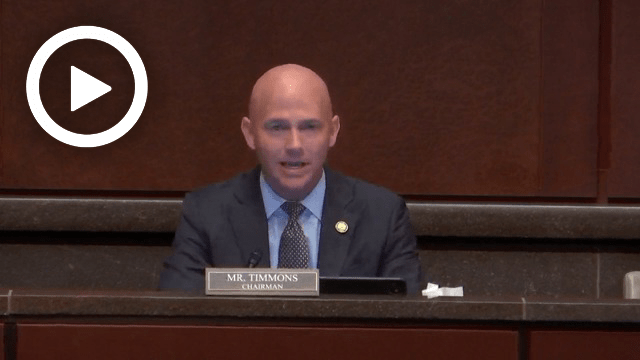Salt Typhoon: A Wake-Up Call for U.S. Cybersecurity
In a pivotal hearing held by the Subcommittee on Military and Foreign Affairs, lawmakers gathered to address a pressing issue that threatens the very fabric of American security: state-sponsored cyber attacks. Titled “Salt Typhoon: Securing America’s Telecommunications from State-Sponsored Cyber Attacks,” the hearing focused on the alarming cyber espionage efforts by groups like Salt Typhoon, particularly their implications for the nation’s critical infrastructure and the personal information of American citizens.
The Threat Landscape
The hearing underscored the growing menace posed by state-sponsored cyber groups, with Salt Typhoon being a prominent example. In late 2024, this Chinese hacking group executed a sophisticated infiltration of U.S. telecommunications companies, gathering real-time data on key American political figures. This operation not only exposed vulnerabilities in the telecommunications sector but also highlighted the ongoing search for weaknesses within U.S. systems that could be exploited for disruption and data collection.
Josh Steinman, CEO of Galvanick, emphasized the gravity of the situation in his testimony, stating, “For years, America’s intelligence chiefs have warned Congress of critical infrastructure vulnerabilities.” He pointed to the revelations surrounding operations like “Volt Typhoon” and “Salt Typhoon” as evidence of China’s deep penetration into American industrial systems. Steinman warned that these cyber forces are strategically positioned within critical sectors—telecommunications, transportation, water, power, and defense—ready to unleash chaos during a crisis, particularly concerning Taiwan.
A Turning Point in Cyber Espionage
Dr. Edward Amoroso, CEO of TAG Infosphere Inc. and a research professor at New York University, characterized the actions of Salt Typhoon as a significant turning point in the ongoing saga of cyber espionage. He articulated that the targeting of telecommunications infrastructure and the collection of sensitive data on U.S. political leaders represent a full-spectrum assault on the trust and integrity of American democratic systems. This perspective underscores the need for a robust response to such threats, as they not only compromise national security but also erode public confidence in democratic institutions.
The Need for Proactive Measures
Despite the frequency of attacks on critical infrastructure, U.S. intelligence agencies have often found themselves in a reactive “damage control” posture. Dr. Amoroso criticized this approach, asserting that merely waiting for the next breach is insufficient. He called for a fundamental shift in strategy, advocating for a national investment in artificial intelligence-driven cybersecurity solutions. This proactive stance is essential for anticipating and mitigating threats before they materialize.
Subcommittee Chairman William Timmons (R-S.C.) echoed this sentiment, stating that the “damage control” posture of previous administrations has left the nation vulnerable. He emphasized the necessity for a forward-thinking approach that prioritizes resilience over reaction.
Collaboration Between Government and Industry
A central theme of the hearing was the imperative for U.S. government agencies to collaborate effectively with private industry to enhance cybersecurity measures. Steinman highlighted that while the government cannot dictate how private industry operates, the unique nature of critical infrastructure justifies a more integrated approach. He argued that the opportunity presented by a potential second term for President Trump could be pivotal in rebuilding American industry with security in mind.
The urgency of this collaboration cannot be overstated. As Steinman noted, “America can no longer afford to fake resilience.” Infrastructure that is not designed to withstand conflict poses a significant threat to national security. The time for transformation is now, as the nation seeks to convert vulnerabilities into genuine resilience, safeguarding its prosperity, security, and freedom.
Member Highlights and Key Discussions
Throughout the hearing, various members of the subcommittee engaged with witnesses to explore the multifaceted nature of the cybersecurity threat landscape. Rep. William Timmons led discussions on the implications of state-sponsored attacks on critical infrastructure and the necessary responses. Rep. Andy Biggs (R-Ariz.) probed into harmonizing cybersecurity regulations and leveraging AI for enhanced security measures. Meanwhile, Rep. Eli Crane (R-Ariz.) focused on the specific threats to the energy grid and the role of AI in protecting vital infrastructure.
Rep. John McGuire (R-Va.) emphasized the need for a comprehensive overhaul of the nation’s cybersecurity strategy to better address these evolving threats. The collective insights from these discussions underscored a bipartisan recognition of the urgency to act decisively against state-sponsored cyber threats.
Conclusion
The hearing on Salt Typhoon serves as a critical reminder of the vulnerabilities that exist within the U.S. cybersecurity landscape. As state-sponsored cyber attacks become increasingly sophisticated, the need for a proactive, unified response is more pressing than ever. By fostering collaboration between government agencies and private industry, and investing in innovative cybersecurity solutions, the U.S. can fortify its defenses against these insidious threats. The time for action is now, as the nation stands at a crossroads in its fight for cybersecurity resilience.
For those interested in delving deeper into the discussions and testimonies from the hearing, CLICK HERE to watch the full proceedings.


